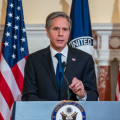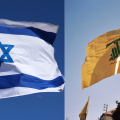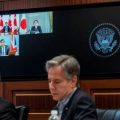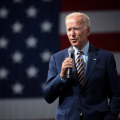Rockets Over Israel: Hezbollah’s Aggression Casts a Long Shadow on Gaza Cease-Fire Hopes
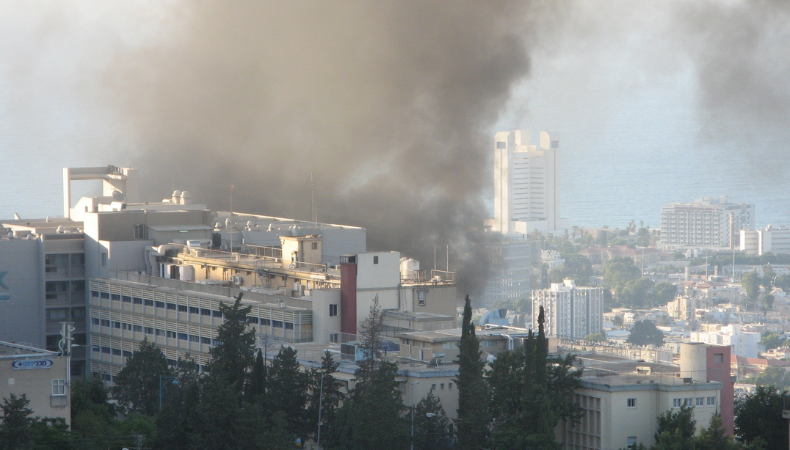
Raising regional tensions, Lebanon’s Hezbollah launched a massive missile assault into northern Israel on Wednesday to exact retribution for the murder of a well-known commander, as the fate of an internationally supported proposal for a cease-fire in Gaza hung in the balance.
This large response highlights the fragile state of affairs and the possibility of larger hostilities in an already dangerous region.
Notes Escalation During Diplomatic Efforts
It was a pivotal moment when Hezbollah started their retaliation attack. United States Secretary of State Antony Blinken was in the region endorsing a cease-fire proposal that was backed by the international community. Still, neither Israel nor Hamas has really embraced the concept.
When Hamas initially formally responded to the cease-fire deal late on Tuesday, it asked for “amendments” to the proposed clauses. This back and forth points up the challenging path diplomacy will have to take.
An ally of Hamas funded by Iran, Hezbollah, has been firing at Israel practically every day since the eight-month-old Israel-Hamas conflict began. The group has made it clear that it will only cease its attacks if there is a truce in Gaza, raising fears of a more disastrous regional firestorm.
Complicating the situation even more are the many geopolitical goals at play and the strong involvement of neighbouring countries like Iran.
Notes Effect on Northern Israel
Norther Israel heard air raid sirens as roughly 160 rockets were fired from southern Lebanon. One of the largest strikes since the conflict began, this onslaught demonstrates how the combat is becoming more and more intense.
Though no casualties were immediately recorded, the missiles severely harmed the region by igniting bush fires and causing generalized dread among the people. While the Israeli military intercepting some missiles prevented greater damage, the continuous attack emphasizes the continuous threat that residents of the affected areas face.
Notes Calculations of Hezbollah Strategically
The fierce response from Hezbollah is a mirror of its strategic thinking during the ongoing conflict. Hezbollah seeks retribution on the killing of a top leader in order to demonstrate its resolve and capacity to respond to Israeli activities. Its opponents and supporters are also being informed by this action that it is still a strong force in the region.
Apart from taking quick retribution, Hezbollah also seeks to maintain its position and supremacy in the greater regional power dynamics.
Stability in the Region and Diplomatic Challenges
The ongoing bloodshed severely hinders diplomatic efforts aiming at a long-lasting peace. U.S. Secretary of State Antony Blinken’s participation highlights the international community’s dedication to a peaceful solution even though there are challenges in the way.
Both Israel and Hamas have reluctantly agreed to the cease-fire proposal, and the situation is made more challenging by Hezbollah’s continuous antagonism. Regional escalation is still quite possible because neighboring countries are closely watching the events. Real worry exists about a bigger battle involving multiple state and non-state participants.
The international community has to tread cautiously through these subtleties to ensure that any cease-fire agreement addresses the underlying issues that motivate the conflict.
Notes Human Price and Peace Seeking
The more fighting, the more lives are lost. Caught in the crossfire of a continuous conflict, the civilians suffer the most. The most recent Israeli attack on a Gaza school, which took over thirty lives, highlights the horrific human cost of the ongoing carnage.
Such incidents highlight how urgently a solution prioritizing the safety and well-being of people is required. Although it is a good step, the proposed cease-fire must be a part of a bigger strategy that addresses the fundamental causes of the hostils.
This covers social, political, and economic issues that have long heightened tensions in the region. Realizing long-term stability and prosperity for all parties involved requires a thorough approach that goes beyond short-term truces.
Keep On Reading
Notes Abstract: Selection of a Stability Course
The most recent clash between Hezbollah and Israel serves as a sobering reminder of the delicate balance that must be maintained to prevent a more widespread regional conflict. Diplomats like U.S. Secretary of State Antony Blinken, who recognizes the need of a strong commitment from all parties to genuine discussion and compromise, are setting the standard.
The world community will have a challenging task ahead of it in resolving a crisis with complex geopolitical implications and profound historical roots. But the region’s long-term stability also rests on the peace process and the speedy cessation of hostilities.
There is still possibility of a peaceful conclusion, however it is still far off. Through persistent diplomatic efforts and a commitment to resolving the core issues, all parties affected by this protracted conflict can find a way ahead that will lead to long-lasting peace and security.

